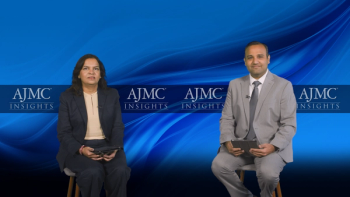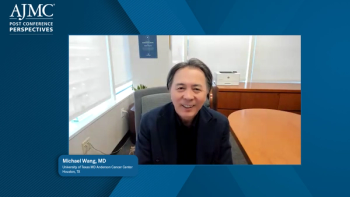
Future Landscape of AML: From ASCO Breakthroughs to Next-Generation Therapies
A panelist discusses how ASCO 2025's most important breakthrough was the oral decitabine plus venetoclax combination, representing a potential paradigm shift if approved by the FDA, while highlighting that menin inhibitors (including the already-approved revumenib and pipeline agents like ziftomenib, bleximenib, and enzomenib) are the most exciting emerging therapies targeting 40% to 50% of patients with acute myeloid leukemia with NPM1 mutations or KMT2A rearrangements, though significant therapeutic gaps remain for challenging subgroups like TP53-mutated disease.
Episodes in this series

Menin inhibitors represent the most exciting drug class currently in AML development, with several agents in advanced clinical trials. Revumenib has already achieved FDA approval for KMT2A-rearranged leukemia as monotherapy in the relapsed/refractory setting and is being studied in the NPM1 setting. Other menin inhibitors, including ziftomenib, bleximenib, and enzomenib), are being evaluated in various combinations with intensive chemotherapy and azacitidine, with some approaching or initiating phase 3 trials. This drug class addresses a substantial patient population, covering approximately 40% to 50% of patients with AML with NPM1 mutations or KMT2A-rearranged disease, making it a particularly impactful therapeutic advance.
The AML treatment landscape continues evolving with additional promising developments in combination therapies involving IDH inhibitors, FLT3 inhibitors, and other novel agents, alongside improved risk stratification tools and better treatment targeting strategies. However, significant unmet needs persist, particularly for patients with TP53-mutated disease, which has not seen major therapeutic breakthroughs despite ongoing research efforts. The field’s trajectory suggests continued expansion of treatment options and improved patient outcomes through precision medicine approaches and innovative combination strategies.
Newsletter
Stay ahead of policy, cost, and value—subscribe to AJMC for expert insights at the intersection of clinical care and health economics.





























































